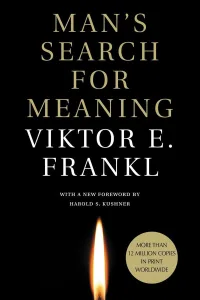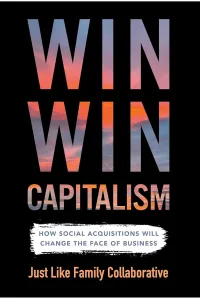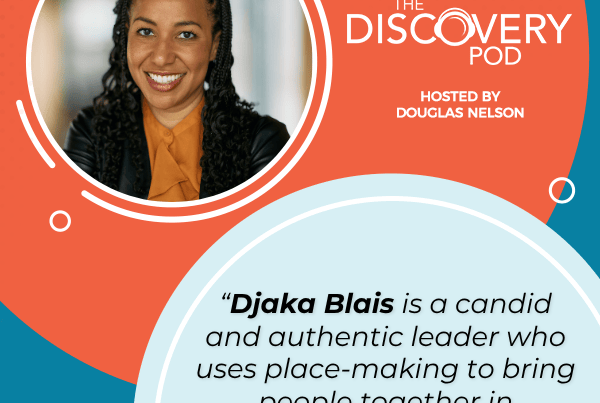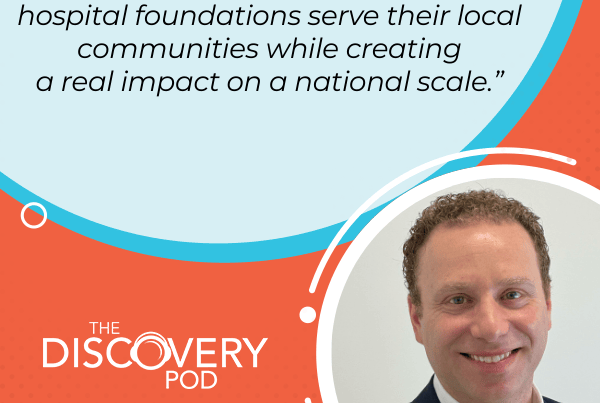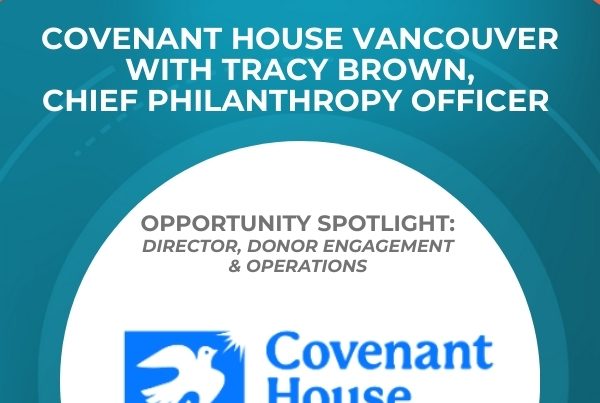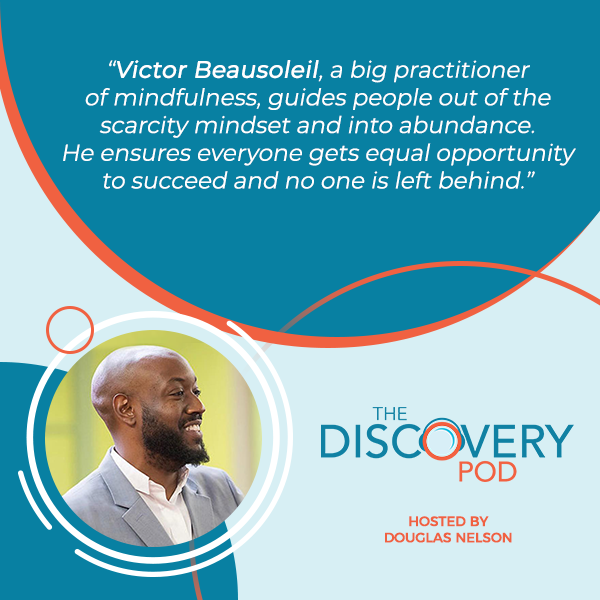
The social economy is a powerful driver for systemic change and inclusion in any community, and this is the central focus of this conversation. Douglas Nelson sits down with Victor Beausoleil, a dedicated leader in the social profit sector, to discuss innovative ways to build resilient communities. From addressing economic inequities to fostering collaboration, the executive director of Social Economy Through Social Inclusion (SETSI) shares his journey and insights on making a lasting impact. Together, they explore how meaningful relationships, bold ideas, and sustainable practices transform lives and create opportunities for those on the margins. Do not miss this inspiring look at how collective efforts can shape a better future.
—
Listen to the podcast here
Social Economy Through Social Inclusion (SETSI) With Victor Beausoleil, Executive Director
Victor, welcome to the Discovery Pod.
Thank you. I’m so grateful for the opportunity, and as always, I always love to just give thanks to my ancestors, the original stewards of the various lands we’re on, to all those who toiled without compassion or compensation, and to all our elders and community stalwarts whose shoulders we stand on as we build, share, and learn together for our collective liberation and sovereignty. Thank you, Douglas.
The Roots Of Victor’s Work In Social Impact
It is a real pleasure to have you on the Discovery Pod, Victor. When my colleague, José Thibault, said, “You know who you’ve got to have on the podcast? You’ve got to have Victor on,” I said, “I’d love to.” We’ll get into it as we go through the conversation. She referred to you as the most connected person in Canada. You must have some sort of superpower. We’ll get to that. If there is, by chance, one of our listeners who’s not familiar with your work, not familiar with you, Victor, I’m really fascinated by your story and how you came to be such a prominent leader in the social profit sector in Canada. Take us back. How did you get involved in the first place?
Thank you. Victor Beausoleil, husband, father of four remarkable children, Micaiah, Emmanuel, Camila, and Aquella. My wife and I have been married for 21 years. I came into the sector primarily because of gun violence. I grew up in East Toronto, and a lot of my friends were murdered due to gun violence. There was a ridiculous school-to-prison pipeline, a lot of piss-poor urban planning, and a lack of meaningful, sustainable employment opportunities.
I wanted to see very specific, underserved, marginalized populations, demographics, and community members have an equitable opportunity so I started volunteering. I started working my first employment opportunity in the sector was a provincial youth outreach worker with the Children and Youth Services. This is when Marianne Chambers was the minister. I worked in the community I grew up in. I worked in Malvern. That work was remarkably rewarding.
I subsequently ended up working in most of the priority neighborhoods because United Way of Greater Toronto, many years ago, put out a report called Poverty by Postal Code. It identified many communities that I worked in, Jane and Finch, Malvern, Chester Le, Fleming Park, Regent Park, Kingston-Galloway, as very underserved, marginalized communities. I worked as a gang intervention worker, a restorative justice worker, and a housing worker and really saw that my passion, vocation, and purpose were to identify ways to solve pervasive systemic challenges that, in a lot of instances, impact some of the most vulnerable constituents in our communities. That was the birth of my work in the social impact space in Canada.
I’m curious to understand more. You described what brought you to it, this lived experience of seeing friends lost, seeing systemic issues, piss-poor urban planning that’s causing some of these problems. You decided you were going to make a difference. Often, we see this a lot across the sector, for people who’ve been involved for a long time, that optimism and hope turn to cynicism. How did you find, particularly as you were getting started, a way to keep focused on optimism and the belief that there is a way to solve some of these really deeply entrenched problems?
Optimism was the only option for me. I became a father at twenty. I’m 41 right now. As soon as you become a parent, you realize you can’t be jaded. You can’t be cynical because you need the world to be better founded for your children. My children have always been my North Star, and my potential grandchildren and descendants. That’s always kept me grounded.
My wife is a remarkable soul, a horticulturalist by background, and she’s been able to keep me in the space of optimism because of her work around regenerative agriculture, agroecology, her hands in the soil, and always making me feel supported, enabled, and recognized, and creating space for my passion and my purpose.
Sometimes I have to work late. Sometimes I’m up very early. Sometimes I have to travel. Having a partner that believes in your vision, your goals, and is supportive, and a family that you know you’re working on behalf of to try to ensure that you leave the world better than you found it, I think is a remarkable set of scaffolds that I’m very privileged to have. That helped me.
Importance Of Mindfulness And Empathy
How do you support or how do you address when you encounter people who don’t have that optimistic support or don’t have that optimistic mindset? Do you run through them, push them to the side, or how do you bring them on to the side of light?
Yeah, I think that there are always untenable situations. There are always people that sometimes you have to call out or call in. There are a lot of folks in my network or community of practice that are advocates and activists pushing the needle on things. Sometimes it creates a certain level of cynicism. Folks do become jaded and burnt out in the sector.
I’m a big practitioner of mindfulness, and a lot of times, I always start every conversation by asking how someone’s family is. Very first thing in any Zoom meeting or phone call. Usually, I ground the conversation in just giving thanks to the original stewards of the various lands we’re on, our ancestors. A lot of times, when you’re mindful of how significant you are, but as well, in the grand scheme of things, how insignificant you are, and having that balance, it creates a dynamic where you change your perspective.
You change your lens in terms of that tunnel vision of, “I’m working on climate justice. If I don’t make this change, the oceans are going to boil. I’m working on restorative justice or the school-to-prison pipeline. I’m working on creating greater economic equity. I’m working on solutions for justice, access, inclusion, diversity, decolonization, equity.” Great. How are you doing? How’s your gut health? Have you done any breathing exercises for the day? How’s your family? When was the last time you spoke to your mother or your father? How are your children?
A lot of times, we have those Zoom-y days where we’re in back-to-back Zooms or meetings, and we lose track of our humanity. I think that grounding ourselves and centering ourselves in a place where we know that, one, systemic transformation is incremental. Sometimes the systems that we’re trying to change, or we think we need to fix, are actually doing exactly what they were built to do. We’re trying to fix something that we’re assuming is broken when the system is doing exactly what it was intended to do.
Sometimes, the systems we are trying to change or think we need to fix are doing exactly what they were built to do. Share on XIt’s all about bringing together unlikely allies and eclectic consortiums of thought leaders and practitioners to advance and evolve systems. That natural maturation doesn’t need to be solely altruistic, but it can be our North Star, making sure that everyone within our ecosystem feels cared for and no one’s left behind.
There’s so much to the idea that the work we do is very significant and very important. Remembering that we, ultimately, as individuals, are quite insignificant. I’ve always thought that to be very freeing. You can do a lot more with a view of yourself as contributing to something bigger than yourself. It helps optimism stay the way.
When you find time to read and meditate, like Man’s Search for Meaning, he went to Auschwitz. There are people that have suffered, like Nelson Mandela. We can name a thousand names of people who have suffered in concentration camps, who have suffered through the transatlantic slave trade, who have suffered in so many Indigenous communities.
Sometimes we create this dynamic where we don’t recognize that one of our superpowers can be empathy, compassion for ourselves. We put so much on ourselves to know a little about a lot of things or a lot about a few things. We need to recognize that we are part of a human family that is striving to make the planet better. I ultimately believe that there’s more good happening in the world than bad. Bad definitely has a better marketing strategy, but I’m a firm believer. I don’t consider myself an optimist, funny enough, even though optimism is how I stay rooted and grounded. Because at my core, I’m an activist.
Systems change or transformation is what I’m about. I know that we cannot fight a defeated foe. I believe that if we’re still playing this game of life, it’s not over. If it’s not over, then there’s room for growth, there’s room for change, and I think there’s room to make sure that everyone is fed, everyone is healthy. Once again, I believe that folks in the social impact sector, we need to be more gentle with each other, more gracious, more understanding, and more empathetic.
SETSI: Social Economy Through Social Inclusion
We could agree about this for the next half hour and call that the episode, but I do want to talk about SETSI, the Social Economy Through Social Inclusion organization that you founded and the important work that you and your colleagues are doing. Could you give us a brief introduction to what SETSI is and the great work you’re doing?
Yeah, absolutely. The work that I was doing prior around finding ways and means to look at how people organize their economic relationships, and figuring out a way to ensure that folks on the margins and the periphery of the economy are supported, was challenging. It was very challenging work in terms of youth justice, affordable housing, incarceration, mental well-being, and unemployment needs.
I realized a lot of the challenges that young people face, those in shelters or coming out of incarceration, reintegrating into society, have an economic lens to almost everything. At SETSI, our focus has always been at the intersection of social innovation. We’ve done a lot of work around social finance in Canada. In 2018, the Fall Economic Statement announced the Social Innovation and Social Finance Strategy, which was a three-tiered plan, the development of a Social Innovation Advisory Council, the development of the Investment Readiness Program, and the development of the Social Finance Fund.
SETSI was part of the Investment Readiness Program, and it was remarkable work done by ESDC, Corinne Bagley, Robin Reisner, who’s remarkable on their team. The Social Finance Fund, the $755 million fund run by Raphael Solvay and his team. This Social Innovation and Social Finance Strategy saw multiple ministers, Yves Duclos, Ahmed Hussen, Karina Gould, Jenna Sudds.
We wanted to find ways and means to ensure that the Social Finance Fund had that lens of justice, access, inclusion, diversity, decolonization, and equity. We worked around social finance. We’ve done a lot of work in the impact investing space, because a lot of times, folks use terms like sustainable finance, social finance, impact investing, and community finance interchangeably. These are different financial instruments, different tools, different investment horizons, investment theses, and different practices.
Building the capacity of Canadians, who, a lot of times, are not aware of these acronyms and terms in the ecosystem, and working on knowledge mobilization, ecosystem mobilization, and that field-building work. We’ve done a lot of work in the social procurement space. My beloved brother, David LePage, the founder of Buy Social Canada, one of my favorite people, transitioned a few months ago, God rest his soul. I pray for his wife, Kim. He was able to push legislation in Canada to move the language from cheapest price to best value.
That simple concept changes lives because now businesses on the margins and the periphery of the economy have access to resources from the federal, provincial, and municipal governments, as well as anchor institutions. Some of these hospitals and universities, the federal government, the provincial governments, and the municipalities are some of the biggest purchasers in regions.
A lot of underserved, marginalized communities and business owners don’t know how to navigate the buy-and-sell GC websites. They have no idea about these requests for proposals or what an EOI is, an expression of interest. We’ve done a lot of work in the social procurement space with PSPC and some incredible colleagues on a federal and provincial level and in multiple municipalities.
We’ve done a lot of work specifically around community consultations, outcomes finance, outcomes contracts, and outcomes purchasing. A lot of times, the assumption is that you can’t pay for performance in the sector and that you can’t create social impact unless it’s just granting. We find ways and means to use different instruments and different terminology to make sure that no one’s left behind.
Some of our most important work has been co-founding the Canadian Centre for Nonprofit Digital Resilience. This work has been phenomenal. The former executive director of the Tamarack Institute, the Digital Governance Council, NTEN, Imagine Canada, the Indigenous Peoples Resilience Fund, a group of us came together to say nonprofit digital resilience in Canada is imperative in terms of decreasing that digital divide.
A lot of times, when we think about some of the pervasive problems around funding for the nonprofit and charitable sector, there is almost an assumption that getting the resources to build a 20-meter bridge when it’s a 100-meter problem will solve anything. What we’re trying to do there is make sure, once again, that the sector is future-proofed, and that’s imperative work for us.
We also co-founded the Catalyst Community Finance Initiative with 10C, Scale Collaborative, SVX, the Ontario Trillium Foundation, the Bloom Equity Partners Fund, and many others. The Catalyst Community Finance Initiative has been around local, place-based community finance, really making sure that, once again, we organize our economic relationships differently to ensure that no one’s left behind.
I’m excited to say that after a few years of working diligently as a team, we’ve been a bit ubiquitous. We have many communities of practice, we have many thought leaders, we have cohorts that we cultivate and support, and we run the Solidarity Working Group with 189 members across the country. We have a podcast, a community of practice, done over 800 interviews, posted 442, and had over 700,000 views. If you go to SETSI Community Coalition on YouTube, you’ll find us. So excited to, once again, find ways and means to build out a solidarity economy, an economy where no one is left behind, because no one should be left behind.
Just a remarkable scope of work and scale of ambition. There’s so much that I want to jump into there. One of the things I think is fascinating about your work and what you’ve just shared is that transition away from rooting the social profit sector in scarcity to abundance. As an activist, I think there’s some optimist in you. I think optimist might, maybe if that’s not the label you wear on your badge, it probably is in the description of you. So much of educating people is to see problems, systems, or processes in a different way, through a different lens, often a wider lens than they have before.
Addressing Resistance To Social Change
I would imagine that in working with a number of organizations, particularly in the procurement work you described, there’s probably often some early adopters who say, “We’d never thought of it that way. Yes, absolutely. Let’s figure out how to make that work.” There’s probably some who are like, “That’s not what it says in my rules. I’m not sure.” There may be some outright resistance that you encounter. What are the different strategies that you and your colleagues use as you encounter that early adopter gentle resistance to outright resistance as you’re moving forward on some of the system change you described?
Data, research, key informant interviews, community consultations, roundtables, communities of practice. When you bring together unlikely allies, thought leaders, and practitioners that have different worldviews and perspectives, you mitigate groupthink almost immediately. You create a dynamic where you almost have that 10th man concept. What it’s done for us is it’s helped us in terms of, one, being able to be almost everywhere because we have champions and ambassadors who speak well of us in different rooms. The reason why we met is because I met one of your colleagues prior, and she was able to champion the work that we are doing.
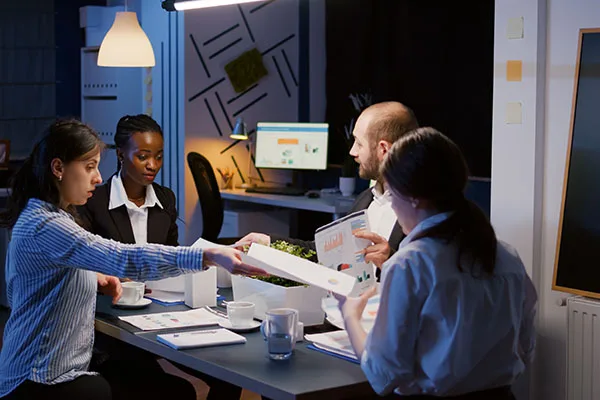
Social Economy: When you bring together unlikely allies, you mitigate groupthink almost immediately and create a dynamic where you have that 10th-man concept.
A lot of times, when we’re navigating the early adopters or the folks that may not be there yet, remember, there are a lot of institutional investors, pension funds, and a lot of blockage and access to capital. A lot of capital has been locked up and hasn’t been unlocked for various demographics in Canada for a very long time. The concept of scarcity versus abundance, there’s an important piece around pattern recognition, and there’s an important piece around understanding how far we’ve come.
Two hundred years ago, I would have been murdered if I was this articulate because I would not have been allowed to read as an African man, a person of African descent, or a Black man. If you think about the Berlin Conference and the partitioning of Africa, the only reason why we’re able to speak right now is because there’s lithium and cobalt being mined in the Congo in my laptop.
The Bretton Woods Conference tied all monetary policy to the dollar and created a great divide. I think about the struggles that my ancestors endured through the transatlantic slave trade, I think about the struggles that my elders faced just to immigrate to Canada through domestic schemes, sometimes even lying about being married to be able to get into the country, I think about where some of my brothers are that passed away.
I grew up in East Toronto. Thirty-three of my friends died due to gun violence. I’m here as a 41-year-old husband, father of four, still alive to say prayers to my daughters, read to my daughters, say prayers to my sons, play basketball with my sons. I feel I’m able-bodied. The amount of privilege I have creates a dynamic where I’m walking into every room with a mindset of abundance.
How can I serve and provide value? If you’re not an early adopter, how can I solve a problem for you? How can I create a logistical solution that will advance your mission? Usually, I’ll do some deep research. I went on the Discovery website. When you were sharing with me some of the things that you’re doing, I was fully aware because being informed by data creates a dynamic where the game’s almost rigged. Marcus Garvey said, “With confidence, you win before you start.” With data, speaking to people, you win before you start. That’s an important premise.
I think our colleague Adrienne Maree Brown says, “Things aren’t getting worse, they’re getting uncovered. We must continue to pull back the veil, hold each other tight.” We’ve had such a challenging time as a species. When you think about the human struggle, the human crisis, we have some pervasive problems. But once again, they can be solved.
If we go into conversations with that premise, that thought, that we can solve these problems, that we can bridge gaps, that we don’t have to be polarized, we’ll fare well as a species and, hopefully, usher in not a utopian society, but at least advance our civilization, our cultures, our communities, and our nations in a way that makes a little bit more sense, hopefully, to our grandchildren.
If you go into conversations believing we can solve problems and bridge gaps, we will fare well as a species. We will advance our civilization in a way that makes a little bit more sense to the next generation. Share on XAnything that we can do as a sector and just as human beings to push forward, rather than rest and look backward or try to recreate a history that never was, is really important. In the work that I get to do with organizations across the country, and having worked with a number of organizations exploring impact investing, social finances as mechanisms, as distinct vehicles, they know the difference.
One of the things the team gets behind is that they decide, “This is what we’re going to do.” They come up with a mechanism. They find the investment opportunities, which is still the hardest part in social impact investing, finding the investable opportunities. When they do find them, they go to the boards, and boards want to say yes, but it’s almost like they don’t know how.
“This is the structure of what we think the role of a board is,” which is to maximize the return on the investable assets of the organizations, particularly true of community foundations and private foundations. In our work, that’s not what you’re incorporated to do. That exists nowhere in your bylaws. It exists nowhere in legislation. That’s not even what CRA is expecting you to do. They’re asking you to manage the resources in a way that is most appropriate for your organization, which is different than putting everything in an ETF and getting the return.
I see people every day, through the work that my colleagues and I get to do, who want to do the right thing, but somehow they don’t know how, or they can’t take that step to move forward. Data is one way that moves people forward. What else motivates organizations to make the change that they know in their core they need to be making, but they’re afraid, or they say they don’t know how?
Unfortunately, usually fear. Fear, anxiety, and trepidation are some of the things that I’ve seen. I’ll give a few examples. In Ontario, it took a young woman, God rest her soul, Jane Creba, who passed away in 2005 in the Year of the Gun in a shooting downtown, for an incredible premier, Dalton McGuinty at the time, and the United Way to build the U Challenge Fund, a $50 million fund that did incredible work. If that young woman hadn’t passed away in that way, the level of gun violence in the city would not have been addressed in that season.
I worked with a huge international humanitarian organization, and they had a huge scandal associated with race, racism, and structural systemic racism within the organization. A team was brought in to help do key informal interviews, develop a report, and identify best practices and promising models in other jurisdictions. That led them down a journey, a continuum, to be able to build out a robust framework, way beyond DEI, to something more like justice, access, inclusion, diversity, decolonization, and equity.
When I think about boards and the importance of governance and fiduciary responsibility, or when you think about just investments in general, part of the challenge is the personalities and the archetypes on the investment committees. Groupthink is a reality. A likeness is a reality. Conscious and unconscious bias is also a reality.
I refer to that as the crush of Canadian consensus. That our boards, people who are wanting, this is the nice thing they do in their life. This is something that’s fun, and they want to get enjoyment and a sense of meaning out of it, and they don’t want to be disagreeable to one another. We just assume, Victor, if you are on the board, we think the same thing. Even if I disagree with you, or you disagree with me, it happens around far too many board tables where people just go, “That’s interesting,” but they don’t say anything. Actual diversity of opinion and constructive conversation, even constructive criticism, goes unspoken, which I think works against change.
My beloved colleague Michelle Baldwin, Vice President at the Community Foundations of Canada, she’s a senior transformation leader, just told me about a colleague of hers at CFC that did a white paper and a presentation on Daring to Disagree, and the concept of daring to disagree. I thought it was remarkably insightful.
The actual insights I gathered from that conversation were what you were just sharing. There is this politeness that sometimes circumvents, mitigates, and halts innovation and the natural maturation that should happen through respectful dialogue and deliberation, or daring to disagree. That concept of the 10th man, from one of my favorite movies, World War Z, is a really important one. You should always have someone in the room who’s going to say no. If everyone’s thinking this way, let me be a little bit contrarian to the dominance construct in the circumstance or situation.
There is so much to that. One of the things that we talk about in our work with boards is that there are lots of roles for boards. There are two that are not on boards. One is, there is no devil’s advocate. We think that’s the polite way, or “I don’t really mean this. I’m just saying this to be difficult,” or “I’m just saying this because it’s my institutional role,” which really doesn’t play an effective role in our sector at all, even setting aside the religious connection there.
The other one is leader of the opposition. You can’t have that person who disagrees. Ideally, it’s everyone. That role of wearing the hat of being the one raising those issues isn’t just 1 or 2 people around a board table. It needs to be everyone at different times. If it’s one person, they get tuned out. If it’s two people, they get tuned out. If it’s three people, they get referred to as a clique, and they get cut out, or they take over the board.
It’s a big world. How to enable boards, and any gathering of people trying to make changes, support community, to share space, to share conversation, to share a strategy, and be thoughtful and critical about it is vital. It is what I see as one of the major breaks to social change in our sector. If it runs through a board, it’s going to take longer, and it’s going to be a lot harder.
I couldn’t agree more. At SETSI, we’ve worked with the boards of philanthropic foundations around leadership training and capacity building, around justice, access, inclusion, diversity, decolonization, and equity. We work with the boards of credit unions, nonprofits, and charities. We’ve built some practices to help folks dare to disagree. We have a concept that we learned from one of our elders called ouch and oops. The ouch and oops concept, are you familiar?
No, I’m looking forward to hearing.
I enter a meeting, and I say, “Hey, guys.” I just misgendered someone. It’s their job to say “ouch,” because they’ve been harmed. It’s my job to say “oops.” I may not know how I unintentionally offended someone, but they’re in, right away. Immediately, there is a sense of accountability and empathy. That ouch and oops concept creates a dynamic where you can have allies in the moment and address the circumstance. You can table it, and after, the person comes to you and says, “By the way, my pronouns are.” or “By the way, I’m from this Indigenous community and not that.” or “By the way, I’m not from.”
Remember, when we think about intersectional identity and polarization and some of the things that occur in terms of just us embracing our humanity, and, once again, the human crisis, the human struggle, we need to create really practical tools to be able to relate interpersonally. That ouch and oops concept, there are so many CEOs and board chairs that have been like, “Vic, that was a game changer for us.”
There was always some time that someone felt offended, and we wouldn’t find out until three meetings later, or the next meeting, or someone’s harboring feelings because they’re consistently misgendered or something. Once again, building out these very simple yet pragmatic and practical ways, building relational infrastructure and navigating relationships, is so important in terms of governance.
Competition Versus Collaboration In The Social Profit Sector
It centers, I love it, because it centers on the humanness, the individuality in the room, and allows you to have those challenging conversations. You’re going to get that immediate feedback, which hopefully allows everybody to lean forward a little bit more and be a little braver in those conversations. I have two things I want to talk to you about that, if I don’t cover off, Josie is going to be very cross with me. We just started working together a few months ago, so I don’t want to start that kind of a relationship with her. One thing that you touched on in an earlier conversation we were having was the role of competition in our sector. Victor, is there competition in our social profit sector?
Absolutely. The sector is based on imperial and colonial constructs that center capitalism, and not win-win capitalism. Shoutout to my beloved colleague and sister, Carla Leon, who wrote the book Win Win Capitalism: How Social Acquisitions Will Change the Face of Business. If folks are competing for what they assume are scarce and meager resources, they’re always jockeying for position, for RFPs, expressions of interest. They’re trying to acquire grants.
When was the last time you heard a grantmaker or a philanthropic founder, there’s something like $200 to $300 billion in philanthropic capital in Canada. There’s a remarkable amount of capital in the public-private philanthropic sector. When was the last time you heard a funder say, “Not yet,” as opposed to “No?” Never. It’s either you’re approved or you’re declined.
If you apply for resources and you’re given a declined email, is there a triage that says, “Your work plan was a little bit wonky. Your budget, your evaluation framework, we didn’t like it. Proper feedback. We would love to send you to this cohort to be able to build or strengthen your capacity so that the next time you engage us, you’ll be successful.” As opposed to a “No,” it’s a “Not yet,” in terms of funders. Very rarely happens in any sector, in terms of our sector. More importantly, when was the last time funders convened the people they said no to and found ways and means to get them to collaborate? Another point.
I have heard of that one.
That’s awesome. Have they ever brought the winners and the folks that were unsuccessful together? It’s winner takes all, or at least winner takes most, in a lot of these situations. It creates a dynamic where the sharpest pencil, the best grant writer, the best infrastructural team has access to greater resources when they may not have the best access to the solution or be closest to the problem.
There’s innovation, just to be clear, happening in the capital or asset allocation space in Canada. This is not to decorate or to be reductive in any way, shape, or form. The important piece around the competition is that we don’t always need to create these models where we’re pinning organizations against each other. We can create frameworks and models that fund greater consortiums and collaborations.
We do not always need to create models where we are pinning organizations against each other. We can create frameworks that fund greater consortium and collaborations. Share on XWe’re seeing it with funders now, but even with the funders that are trying to create these consortiums and collaboratives, there’s still a lens of competition because of how they go about putting out their streams of resources and how they go about selecting organizations, in terms of just, once again, conscious and unconscious bias that plays a role in almost everything.
One of the ways I know that you and your colleagues deal with that is through those consortiums, through collaborations, through coalitions, and by bringing people together so that many are funded through one and can be funded through one. I’m interested in exploring that a little bit because one of the things I’ve observed, and I had a conversation with someone that reminded me of it, in Canada in particular, we don’t have those intermediary organizations that act as umbrellas for parts of our sector, and funders aren’t willing to fund or struggle to fund those collaborations and those coalitions. You’ve managed to find a way through and get funding for a lot of the work that you’re doing. What’s made the difference?
I think the difference has been a shift in terms of some of the leaders in the social innovation, public service, and social impact ecosystems. For instance, we have three incredible wholesalers for the Social Finance Fund, Bowen Capital, Realize Capital, Rally Assets, and Fondaction Capital Finance, a consortium in Quebec. When you look at the Community Service Recovery Fund post-COVID, you had United Way, Community Foundations of Canada, Andrea Dicks and Andrew Chunilall, Dan Clement at United Way, and the folks at Red Cross.
We are building out this framework now, slowly but surely, of wholesalers and intermediaries. The challenge is, what’s the intent? If the intent of building out these wholesalers and intermediaries is for greater collaboration and mitigating and circumventing the scarcity model and competition, great. If it’s to reduce risk on the part of governments and to outsource things, then we have to look at the work of Mariana Mazzucato in the UK and other folks that are saying governments can’t always outsource things.
That’s why I’m always interested in blended finance frameworks, or what ANI Patent Power calls Adventure Finance, or Impact Investing 3.0. There are models in different jurisdictions, and we oftentimes only look to the UK. We’re not looking at South Africa. We’re not looking at India. We’re not looking across Africa. We’re not looking across the Global South. To your points, Canada has come a long way as a nation in terms of building out some wholesalers and intermediaries over the past 5 to 8 years, but we have a long way to go because even these larger bodies are competing with each other for assets.
Abundance Mindset And The Importance Of Giving Back
That competitive nature, which she says is structural in our sector, contributes so much to the scarcity that drives so many of the organizations, so many of the people in our sector. Taking the time to learn more about SETSI and more about your work, getting ready for this conversation, you and your colleagues have a way of structuring the conversation to be about something bigger than the individual organizations, to move away from that scarcity and to show a different way. There’s a discipline to keeping that focus because it can be easy as human beings to sink into scarcity. It’s wired into us. How do you keep your individual focus at that level, pulling others out of scarcity to look to the horizon in abundance?
Service. I’m a servant leader. My father taught me years ago, givers never lack. That premise of givers never lack, being able to give my time, my energy, and my resources to members of my community, thought leaders, and practitioners that need my support, creates a dynamic where we’re always in abundance because we are rich with relationships. That relational infrastructure leads to opportunities. That relational infrastructure leads to logistical solutions. That relational infrastructure leads to being able to be positioned, because there’s nothing more remarkable than when opportunity meets preparation.
There is nothing more remarkable than when opportunity meets preparation. Share on XThat concept of givers never lack, I think, is important. I think about my grandfather, who taught me about 1,000 cups of tea and the importance of just cultivating and stewarding relationships with people. I think about my grandmother when she taught me about hurry up and take my time, even though that sounds creepy. How do you hurry up and take your time?
What she meant when she was teaching me that as a young boy was that you need to be intentional, disciplined, vigilant, and diligent, but you also need to be thoughtful, introspective, and disciplined enough to not just react. Because folks that are always reacting don’t have the ability to anticipate or adapt. The reactionary framework versus being able to anticipate or adapt is important because things happen in cycles. If you know things happen in cycles, and you can start putting the clues together around pattern recognition in ecosystems and sectors, it’s easier to solve problems.
I so admire the message and the impact that you and your colleagues are having. As we come to the end of our conversation, Victor, what are you looking forward to?
I’m looking forward to being able to support my wife to impact the green belts like Wangari behind me here, supporting my wife with her work around agroecology, regenerative soil, the soil food web, and the soil science work that she’s doing. I’m looking forward to seeing my son Makaya, my son Emmanuel, and my daughters Camille and Aquella putting aside capitalistic ideals and finding ways and means to serve humanity and serve their family and their community in meaningful ways.
I’m looking forward to my colleagues feeling fulfilled every quarter in terms of the work that we’re doing. I’m looking forward to Canada being a nation. It was Jean Chrétien’s 91st birthday a couple of days ago, and he put out a powerful message to our folks south of the border. I’m looking forward to Canada, as a nation, being able to lead as it relates to the remarkable work of Senator Rosa Galvez around CAFA, the Climate Aligned Finance Act, and being a leader as it relates to climate justice.
I’m looking forward to so many things. The list can go on and on and on. I’m looking forward to assets and capital being deployed by the largest pension funds and the largest philanthropic foundations in a way that makes sense for communities, both locally and regionally. There’s so much to look forward to. I believe that this journey is far from over for me. But if I have a few days left or a few years left, I pray, I’m looking forward to leaving this planet better than I found it.
You’re certainly on the right track to do that, Victor, and I appreciate the work that you do and that you made time to share some of that with us on The Discovery Pod.
As always, let us give thanks, to my ancestors for the opportunity to share and build with you all, to the original stewards of the various lands we’re on, to all our elders who worked without compassion or sometimes without compensation, and to all the community stalwarts whose shoulders we stand on as we build, share, and learn together for our collective liberation and sovereignty. Thank you so much, Douglas.
Thank you.
Important Links
- Victor Beausoleil on LinkedIn
- Social Economy Through Social Inclusion
- Canadian Centre for Nonprofit Digital Resilience
- Tamarack Institute
- Digital Governance Council
- NTEN
- Imagine Canada
- Indigenous Peoples Resilience Fund
- Catalyst Community Finance Initiative
- 10C
- Scale Collaborative
- SVX
- Bloom Equity Partners
- SETSI Community Coalition on YouTube
- Bowen Capital
- Realize Capital
- Rally Assets
- Ontario Trillium Foundation
- Community Service Recovery Fund
- United Way
- Community Foundations of Canada
- Red Cross
- Man’s Search for Meaning
- Win Win Capitalism: How Social Acquisitions Will Change the Face of Business

